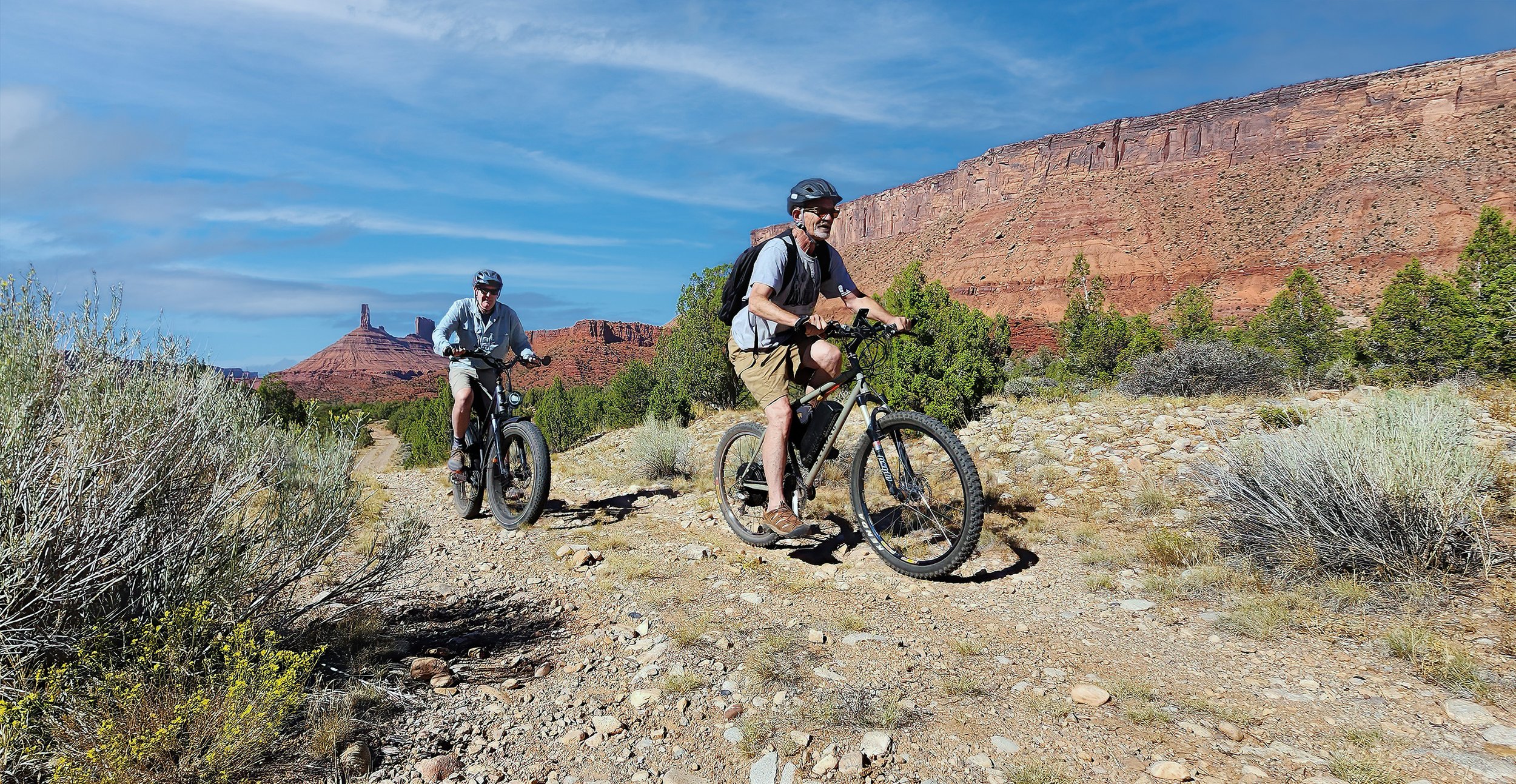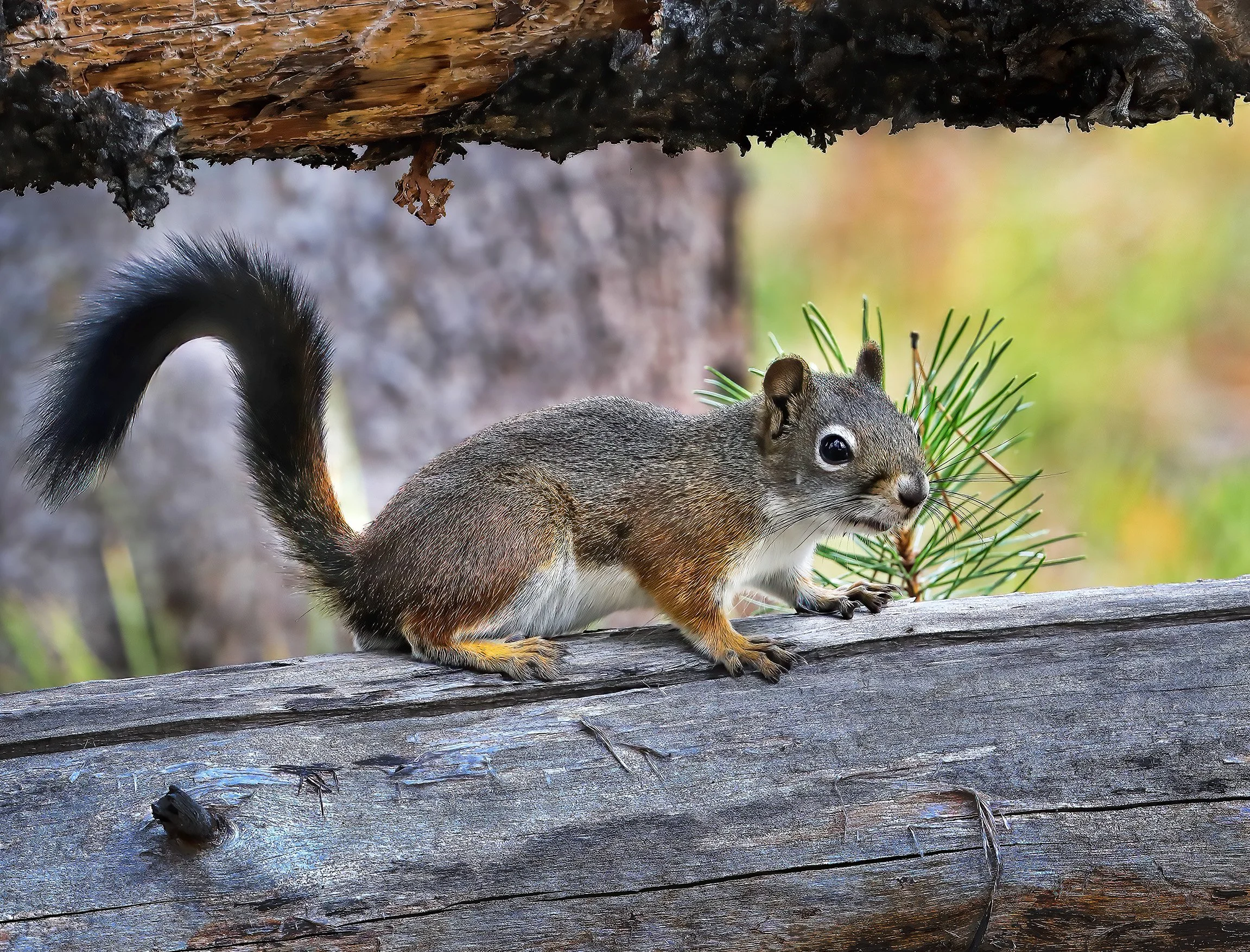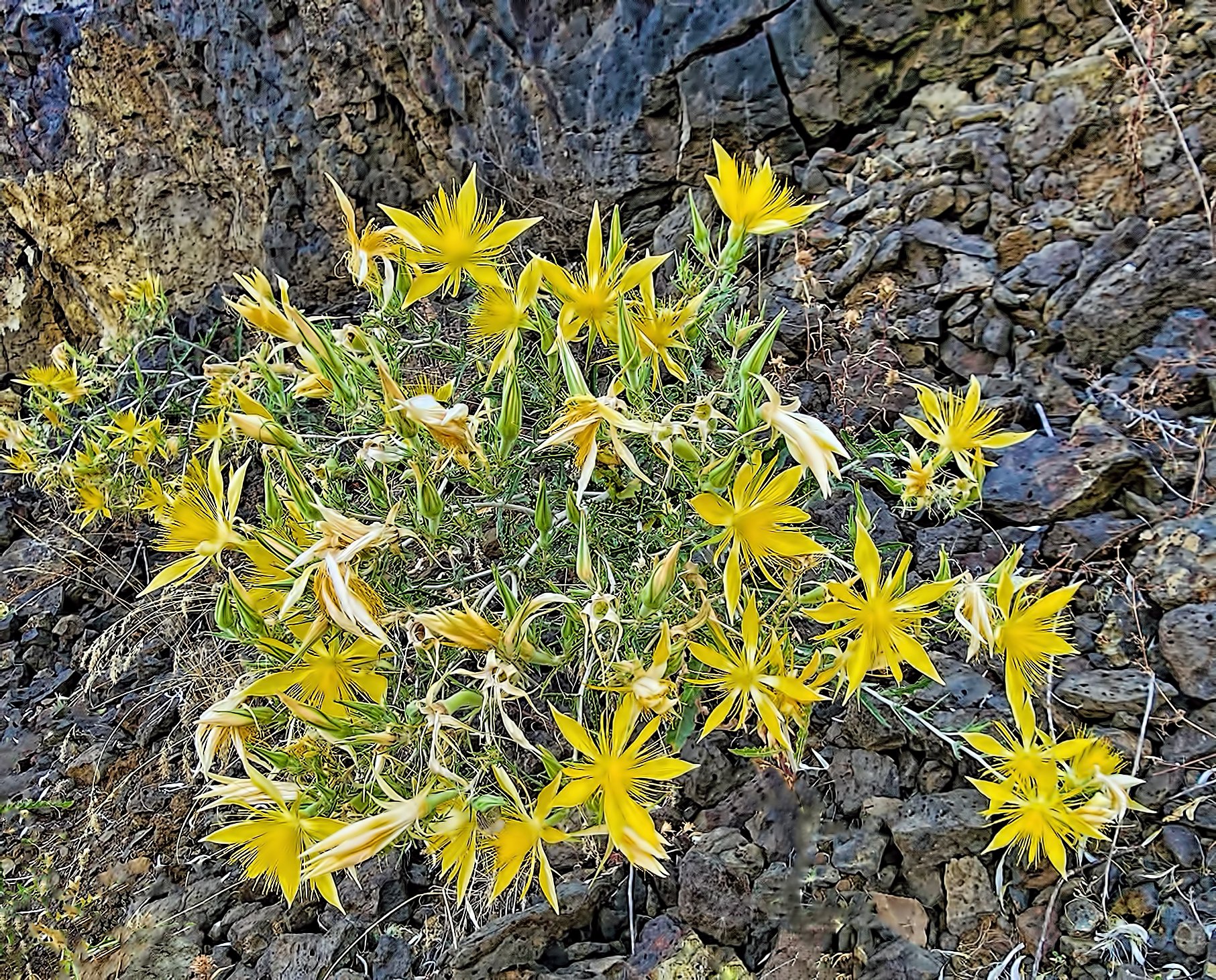make off with a dead rock squirrel, caught in the act by the all-seeing eye of a trail camera.
Kit foxes (Vulpes macrotis).
A curious coyote (Canis latrans) late to the party.
make off with a dead rock squirrel, caught in the act by the all-seeing eye of a trail camera.

Kit foxes (Vulpes macrotis).

A curious coyote (Canis latrans) late to the party.
raises its stinky black-capped head in a matter of hours, triggered by recent heavy rains and today’s warming sunshine. Several of these odd fruiting bodies have emerged over the last six hours. Flies love the putrid odor.

Stinkhorn fungus (Phallus impudicus), also known as prickle mushroom for some reason.
Pinyon Jay, who seems happy to hang out at my oasis all day, rather than traveling with the raiding flock.

Pinyon Jay (Gymnorhinus cyanocephalus).
preceded a huge squall that just passed through Castle Valley. Look closely, there’s a hint of a double rainbow in the image. Sublime.

in the high country in the La Sal Mountains of southern Utah. It’s been a stormy day in Castle Valley.

Mt. Waas (elevation 12,306 ft / 3,751 m) and Manns Peak (12,272 ft / 3,741 m), left and right, respectively. That’s the summit of Round Mountain in the lower left.
smile on Castle Valley at high noon.
The Sun sits directly above Round Mountain in this view from one of my favorite perches. (Click on image to enlarge.)

at my feeding stations are these attractive but very annoying jays, whose perfectly timed raids occur after I fill the feeders.
Pinyon Jay (Gymnorhinus cyanocephalus). Click on image to enlarge.
While the most melodic at the feed trough is this sparrow, about the size of a Robin.

Spotted Towhee (Pipilo maculatus).
in Castle Valley with my two neighbors. Endless big fun on our eMTBs.



as experienced at the Potash Road petroglyph panels near Moab, Utah.

First morning light flares through a gap in the jointed sandstone on the opposite side of the Colorado River.

Direct rays of the rising Sun are strongly controlled by the jointed terrain to the southeast, limiting the places where the cliff is first illuminated along the Potash Road.

Another view showing the rising Sun’s rays striking the sandstone escarpment along the Potash Road at the equinox. Terrain models are from Photo Ephemeris website, a planning tool I use for astrophotography.

My long shadow projected on a fully lit panel around 7:30 am MDT.

Rock art expert Rory Tyler at one of the many small petroglyph sites along the Potash Road.
blasts the dawn as I return to Castle Valley, Utah. The trails are already calling.

And later this morning a welcoming committee of several dozen Pinyon Jays mobbed my feeder. That didn’t take long to discover and good thing it was full of seed.

Pinyon Jay (Gymnorhinus cyanocephalus) hiding in squawbush.

of western Montana. It’s hunting season and all the big animals are in hiding so I was shooting small game.

Yellow-pine chipmunk (Neotamias amoenus).

American red squirrel (Tamiasciurus hudsonicus).

Water strider (family Gerridae) illustrating the phenomenon of buoyancy through surface tension.
than their appearance might initially suggest. This turkey hen just strutted through the property with seven poults following along, pecking and foraging in the brush.

Wild Turkey (Meleagris gallopavo) adult hen.

Preening poult.

Runt of the flock taking a load off.

Momma’s got something good.
is being waged against this annoying woodpecker, determined to dismantle the cedar siding on my home.

Northern Flicker (Colaptes auratus).
is a new game being played by my owl buddies. Looks like I need to get a kiddie pool for these characters.
These are cropped frames from the trail camera where time stamps show these two juvenile Great Horned Owls played together for 15 minutes. The diameter of the bird bath is two (2) feet (0.6 meters) for scale.
as I go about my early morning chores outside. It’s been like having my own pet owls the last month!
A very relaxed Great Horned Owl (Bubo virginianus). Click image to enlarge.
Standing sentry as the noon hour approaches. (Click image to enlarge.)

The regular pair, hanging out together mid-day.

this vibrant giant blazingstar is especially colorful against the dark basalt.

Giant blazingstar (Mentzelia laevicaulis), about three feet (one meter) in diameter.

Blazingstar blossoms are large, about 3.5 inches (9 cm) across, and full of whisker-like stamens.
in the wetlands this morning, and a reminder that Thanksgiving is just around the corner. Here comes autumn.

Mallard or Wild Duck (Anas platyrhynchos).

Wild Turkey (Meleagris gallopavo).
to accommodate two Great Horned Owls at once! These two spent about 30 minutes together in the pool before retreating to a nearby perch to preen.


One GHO used the trail camera as a nearby perch before returning to the bath.

Right on time for a visit the following morning.
yields fragments of four (4) mouse skulls and a variety of long bones. Owls regurgitate undigested teeth, bones, fur and feathers in a single compact nugget, usually found on the ground beneath their favorite roosts.

Larger mouse bones found in a single owl pellet, with an undissected Great Horned Owl pellet on right. Plus two toothpicks for scale comparison.
I watched Chappie, my juvenile Great Horned Owl friend, spit up two of these bone-filled nuggets several days ago. He appears to be quite well fed.